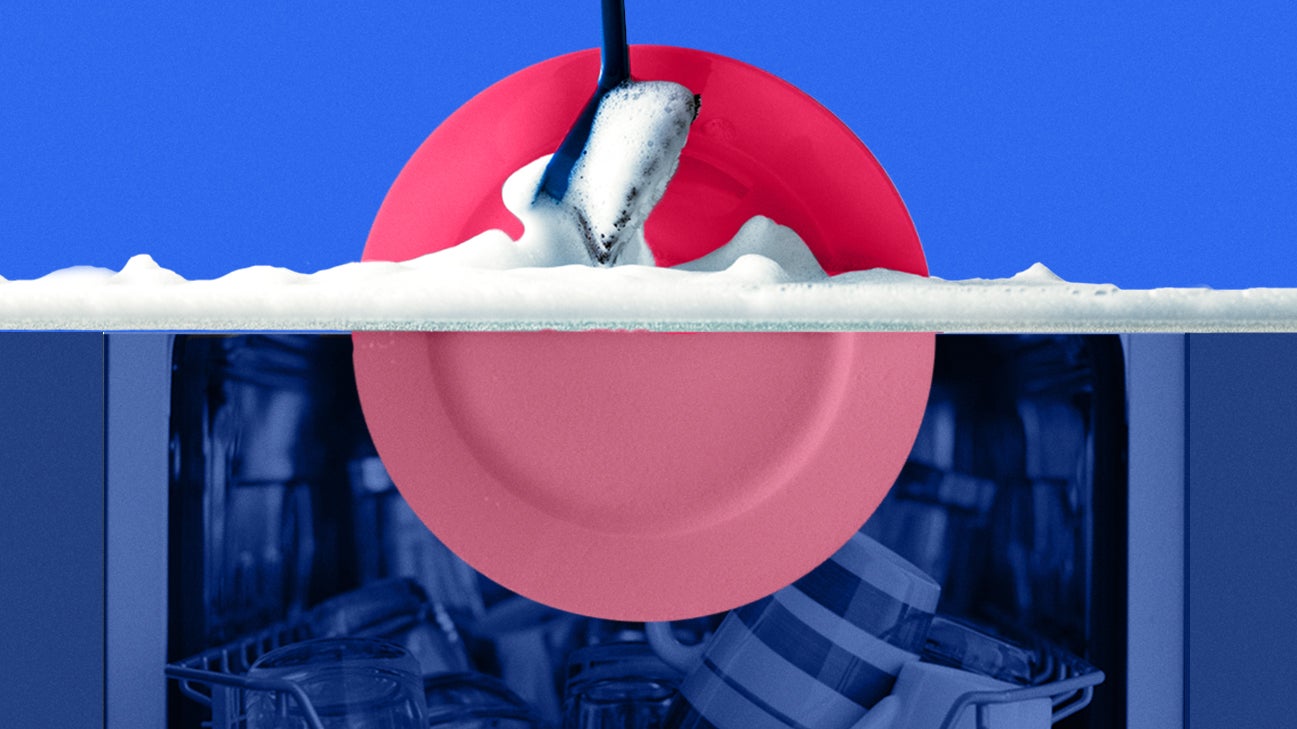All featured products are curated independently by our editors. When you buy something through our retail links, we may receive a commission.

It almost seems redundant to clean a dishwasher. It’s designed to clean dishes, so shouldn’t it be self cleaning? Sadly, it’s not. In fact, dishwashers can get quite filthy, especially if you run them often.
Why Do You Need to Clean the Dishwasher?
Dishwashers dissolve food particles from your dishes with the help of hot water and detergent. Over time, food particles can clog up the drain and spray arms. The clogs reduce the amount of water circulating during the wash and rinse cycles. Eventually, your glasses get cloudy and dishes end up with a film of soap and food residue.
Regularly cleaning your dishwasher not only helps your machine clean effectively, but may even extend the life of your appliance.
How Often Should You Clean the Dishwasher?
If you run a load every day, appliance experts recommend that you clean your dishwasher’s filter and drain once a month to help keep it running smoothly and your dishes clean. If you use it less often, you might be able to wait a bit longer between cleaning.
How to Clean the Dishwasher
The good news is that it’s not hard to clean your dishwasher—and all the ingredients you need are already in your pantry!
You’ll need:
- Distilled white vinegar
- Baking soda
- Kitchen towel
- Dish soap
1. Clean the drain. Empty the dishwasher and remove the bottom rack. The drain is located on the bottom of the basin, below the spray arm. Remove any food residue from the drain with a paper towel and discard. You’ll be surprised how much gunk ends up in the drain. Try to get in the habit of clearing the drain after each wash cycle and make sure dishes are scraped clean of any large pieces of food residue. A clear drain will increase cleaning efficiency and prevent damage to the dishwasher.
Debbie Wolfe
2. Wash the filter. Many dishwashers have removable filters. Most have a circular filter that is located under the spray arms on the bottom of the dishwasher’s interior. Some models have a separate metal coarse filter held in place by the cylindrical filter. If you are unsure where your filters are located, consult your appliance manual. To remove the cylindrical filter, turn it counterclockwise and lift it straight up. If your dishwasher has a coarse filter, the metal plate will release along the cylindrical filter. Wash both in hot, soapy water. Inspect the sump (the hole where the cylindrical filter slides into) for solid chunks of food or other debris. If it’s clear, reinsert the filter(s).
3. Run a wash cycle with vinegar. Fill a dishwasher-safe cup with the white vinegar. Place the cup on the top rack of the dishwasher. Use the hottest water setting on your dishwasher and run it through a cycle. White vinegar is an effective cleaner, deodorizer, and sanitizer.
4. Run a wash cycle with baking soda. Once the vinegar cycle is complete, sprinkle a cup of baking soda around the bottom of the dishwasher. Run it through a short cycle in on the hottest water setting. The baking soda deodorizes and removes any stains.
5. Wipe the rubber seal. The rubber gasket around the door can get dirty with daily use. Use a towel and hot, soapy water to wipe away any gunk on the gasket.
6. Wipe the front. Rinse the kitchen towel in clean, hot, soapy water and wipe down the front of the machine. If you have a stainless steel dishwasher, use stainless steel cleaner to give it a spiffy shine.
How to Keep Your Dishwasher Cleaner Longer
Scrape your dishes well before you place them in the dishwasher to prevent food buildup in the drain! But remember to deep clean the dishwasher itself every once in a while. Or learn how to hand wash dishes in the least annoying way.

0 Commentaires